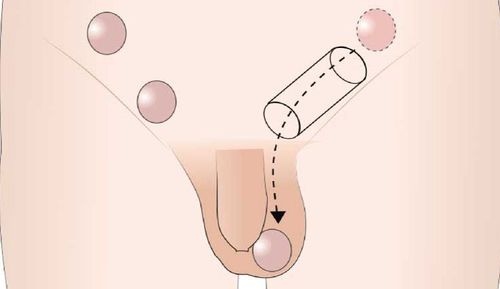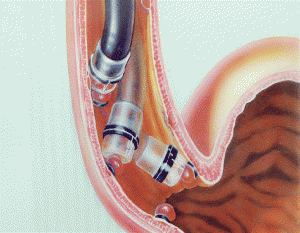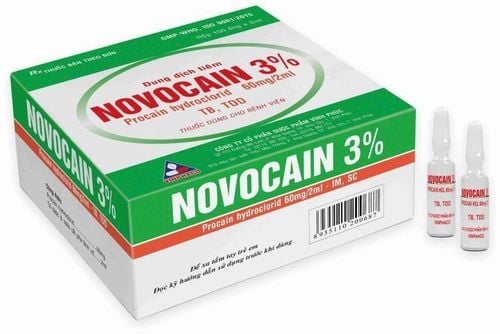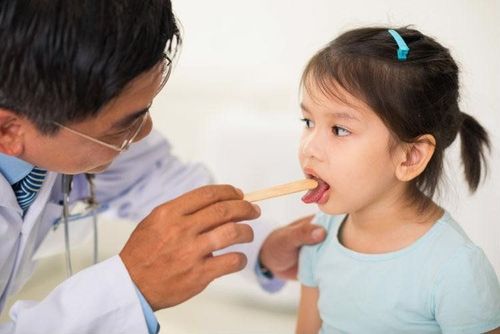This is an automatically translated article.
The article was professionally consulted by BSCK I Nguyen Duc Tho - Anesthesiologist - Anesthesiology Department - Vinmec Central Park International HospitalSacral space anesthesia is a regional anesthetic technique, when local anesthetic is introduced into the epidural space through the sacral fissure and sacral canal. For this reason, sacral anesthesia is also known as transsacral epidural.
1. Anatomy brief
1.1. Same slot
The sacral fissure, also called the sacral triangle, is triangular in shape. This is the relic of the same vertebral spine number 5 and two transverse processes having a triangular shape with the apex pointing upwards.
The sacral triangle is located 5 - 6.3 cm from the top of the tailbone along the midline. The sacrum is a thin layer and covered with fibrous organizations, behind the membrane is the reinforced sacral ligament.
The unusual case is when some of the last arcs are not closed, or all of the 5 posterior arcs are open, or they are fused and amputated.
1.2. The same tube
The sacral canal is the cavity in the sacrum, curved and long along the sacral direction, above it connected to the canal, below is the sacral cleft. On the posterior surface of the canal, there are 2 anterior and posterior walls, made up of 2 anterior and posterior sacral plates.
The anterior wall of the sacrum is thick, rough, and continues the vertebral bodies. The posterior wall is thin and smooth. The tube is about 7-10cm long, about 5-6mm in diameter, and has a volume of 12 - 56cm3. The sacrum contains:
● The sacral nerve;
Nerve ganglia of spinal nerve roots;
● Grease and link organization;
Lymphatic organization;
Small veins and arteries.
The epidural space in the duct communicates with the epidural space in the back. If the fibrous and ligamentous organization is not covered, the sacral canal communicates with the rectal and pelvic cavity through the sacral foramen.
2. When is the sacral anesthesia needed?
2.1. Point
● Surgery of the perineum, anus, and lower rectum;
Genital surgery;
Surgery or cystoscopy ;
Prostate surgery or Radium needle insertion to treat prostate cancer;
Post-operative pain relief;
● Coordinate with anesthesia to reduce pain during and after surgery for young pediatric patients;
● Pain relief for women during childbirth.
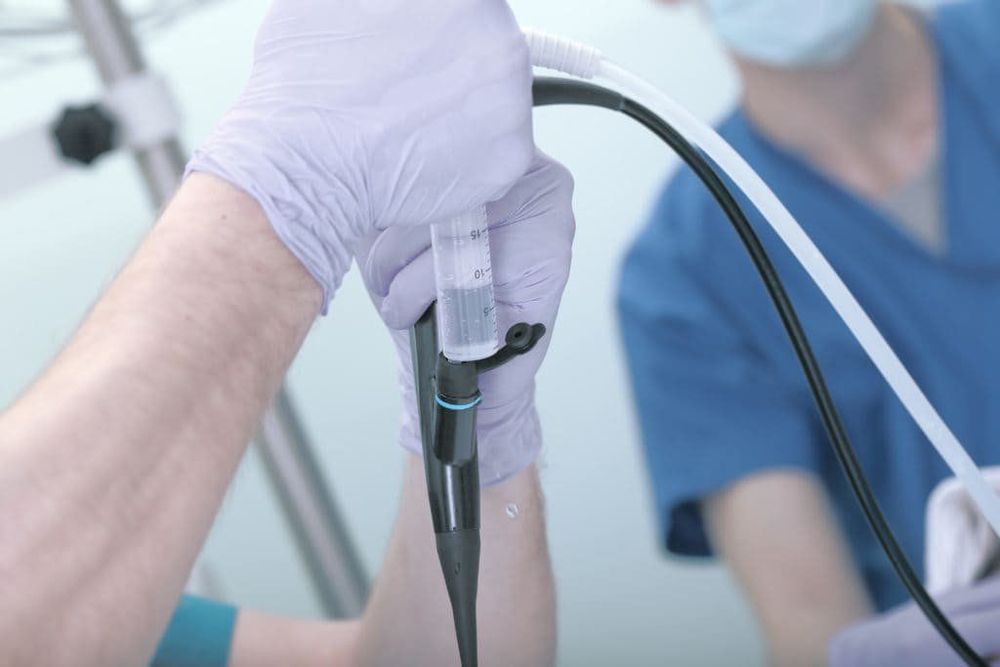
Gây tê khoang cùng được chỉ định cho soi bàng quang
2.2. Contraindications
● The patient does not agree to perform general anesthesia;
Allergy to local anesthetics ;
● Infection of the sacroiliac area;
Shock or lack of circulating volume;
● Nerve damage;
Blood clotting disorder ;
● Aortic or mitral valve stenosis;
● Severe decompensated heart failure;
Abnormal spine anatomy.
In addition, sacral anesthesia is also contraindicated in obstetrics if the pregnant woman has placenta previa, the pelvis and fetus are mismatched or the pelvis is distorted.
3. Steps to anesthetize the same cavity
3.1. Prepare the patient
The patient is fully prepared for the same steps as when having an epidural, in addition, it is necessary to pay attention to additional cleaning of the sacral area. Care should be taken to disinfect before anaesthesia because this area is close to the anus, so the risk of infection is very high.
3.2. Means, tools
● Anesthesia needle (avoid using small needles that are easy to enter the bone);
● Needle and syringe;
Anesthesia ;
Other means of resuscitation.
3.3. Patient Pose
The patient lies in a prone position, arching the back of the shrimp, legs folded for comfort and ease of performing the technique, and at the same time limiting the risk of hypotension due to vagal reflex.
3.4. Identify the same slot
● The doctor uses the tip of the left finger to probe along the midline of the sacrum from the top down to the 4th sacral, when the finger falls into a depression, it will correspond to the upper top of the sacral triangle, from which it can be found 2 bottom corners;
Can be palpated from the top of the coccyx along the midline up to the midline of the S4 vertebra;
● The needle puncture site is usually about 1cm below the spinous process about the middle of the S4 vertebra.
3.5. Anesthesia technique
● The local anesthetic needle is usually located in the lower third of the sacral fissure;
● Poke perpendicular to the skin surface (In children, insert the needle at an angle of 45°);
● When the needle tip touches the bone, lower the angle of 20° and then push the needle up gradually (If not, lower the needle and then push up);
● The test is similar to epidural anesthesia, can use a test dose of lidocaine mixed with adrenaline. If a dose of anesthesia is administered, inject the drug and then withdraw the needle;
● To reduce pain after surgery, you can insert more polyester;
● Surgery can be performed 15 minutes after the anesthetic is injected.
4. Dose of anesthetic
The volume of the drug depends on the area to be analgesia, on average, twice as much as the lumbar epidural if the anesthetic effect is desired at high altitude. Dosage is usually divided into groups of children or adults.
4.1. Children
● Calculated according to the dose of 0.5ml/kg. If a dose of 1.25ml/kg is used, numbness can spread to the middle of the chest;
● Use bupivacaine 0.25% dose 0.2 - 0.4mg/kg/hour to reduce postoperative pain, can add fentanyl 0.6 μg/kg/hour.
4.2. Adult
● Xylocaine 2% dose 10ml for surgery in the perineum area, if the dose is increased, the numbness will be more and higher;
● Bupivacaine 0.25 - 0.5% dose 1 - 2mg/kg, can add morphine 60μg/kg and reduce bupivacaine dose;
● Note: If the anesthetic pump is gradually increased from 10 to 60 ml, the anesthetic will spread from S3 to D4.
5. Complications
5.1. Local anesthetic poisoning
Caused by injecting the wrong anesthetic into a blood vessel. The typical symptom is the patient having convulsions.
5.2. Lower blood pressure
It is a common complication caused by anesthetics that inhibit the sympathetic nervous system. However, hypotension is usually milder than with conventional epidurals.
● Symptoms: Yawning, sweating, nausea, vomiting, weak pulse and low blood pressure;
● Management: Give oxygen, lower head about 100, inject ephedrine or noradrenalin, as well as colloidal infusion.
5.3. Nausea, vomiting
● Cause: Due to low blood pressure or changes in intracranial pressure or side effects of drugs of the morphine family;
● Manage: Increase blood pressure with fluid replacement, vasopressors or antiemetics.

Bệnh nhân có thể gặp biến chứng sau gây mệ như buồn nôn và nôn
5.4. Spinal anesthesia
● Cause: Because the needle is too deep, the needle tip is in the sac with the dura, so the entire anesthetic is put into the spinal cord;
● Symptoms: Low blood pressure, high numbness, respiratory failure, possibly temporary paralysis of extremities if large volume anesthetic is injected;
● Treatment: Use vasoconstrictor drugs, controlled breathing and intravenous fluids.
5.5. Infection
● Cause: Non-compliance with the aseptic principle when performing the technique;
● Symptoms: Skin infection of the sacrum or epidural space abscess;
There are also cases of broken needles or broken catheters when performing sacral anesthesia but are rare.
In summary, sacral anesthesia is one of the preoperative anesthetic modalities, next to local anesthesia and anaesthesia. This technique is often indicated in surgery of the pelvis, perineum or pain relief in the lower extremities. There is a study that shows that the combination of cavity anesthesia with endotracheal anesthesia will help reduce the dose of anesthetic, early extubation and reduce the need for analgesia after abdominal surgery in children.
Cavity anesthesia is an anesthetic technique applied during genital surgery, women giving birth,... in order to minimize pain as well as complications for the patient. Therefore, this method needs to be performed by skilled surgeons and surgeons.
Vinmec International General Hospital is the address for examination, treatment and prevention of many diseases. In addition, Vinmec also deploys methods of anesthesia, anaesthesia, ... suitable for each patient as well as surgery in order to minimize complications and effectively reduce pain for patients.
Customers can directly go to Vinmec Health system nationwide to visit or contact the hotline here for support.





